Bugatti’s Rebellious First Le Mans Race Cars Inspired This Chiron Super Sport

Bugatti is well known for its overall win at the 1937 24 Hours of Le Mans, where Jean-Pierre Wimille and Robert Benoist piloted the Type 57G “Tank” to victory, but the brand’s first factory running at Le Mans happened six years earlier in 1931 and was, in typical French fashion, a bit of a protest. The three Type 50S race cars that competed at Le Mans in 1931 served as the inspiration for a new one-off Chiron Super Sport, and the story behind its untraditional black paint is pretty funny.
The Range Rover Tailgate Event Suite is Peak Luxury Lounging
While the company had seen major successes with small, lightweight Grand Prix race cars like the Type 35, being competitive at Le Mans was a whole ‘nother beast, requiring big, powerful engines that Bugatti just didn’t have. So along came the Type 50S, which introduced a new supercharged 5.0-liter inline-8 engine with dual overhead cams that produced about 247 horsepower, finally giving Bugatti something to compete with and kicking off the company’s history of massive displacement. Jean Bugatti was convinced that the Type 50S would be able to win at Le Mans, so the company entered three cars in the race.
Photo: Bugatti
From the beginning of auto racing, cars were painted in a color that represented the country they hailed from, with the most recognizable being red for Italy, white or silver for Germany, green for England, and blue for France. The French blue has become a signature color for Bugatti, but in 1931, the French government refused to sponsor the Bugatti team’s efforts, so the company painted all three Type 50S black in protest. (Bugatti says the black paint was also “a visual metaphor for a new approach” to the company’s racing.) Sadly, one of the Type 50S was involved in an accident in hour three of the race after a tire failed at high speed, so Bugatti retired the other two cars to safeguard them from further crashes.
Fast-forward nearly 100 years, and a customer approached Bugatti with the desire to create a one-off Chiron Super Sport with a black-on-black color scheme that would “appropriately celebrate Bugatti’s history.” Jascha Straub, the lead designer for Bugatti’s Sur Mesure division, used the Type 50S racers as the catalyst for the new Chiron, which is named “Hommage T50S.” Specifically, Bugatti referenced chassis number 50177, the car you see in these photos, that was driven by Albert Divo (namesake of the new Divo) and Guy Bouriat in the 1931 race and now resides at the Loh Collection in Dietzhölztal, Germany.
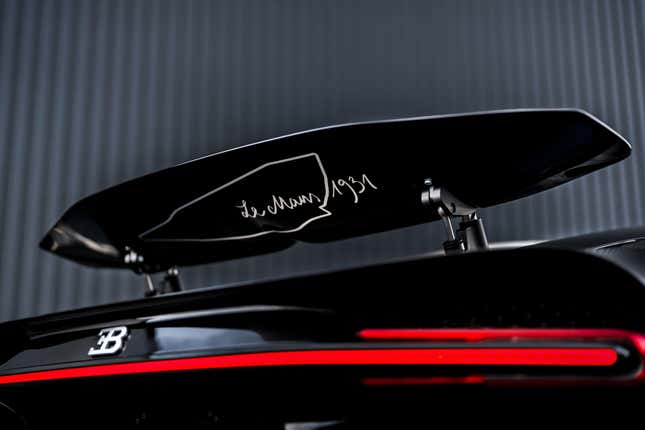
Photo: Bugatti
Like the original Type 50S, the Chiron is painted in “a dark and lustrous” black color and has the number 5 painted on each door, the same number as the Type 50S. The front grille has an aluminum surround and a cool square mesh, with the number 5 prominently featured in the center. “Le Mans 1931″ is written in script ahead of the rear wheel arches, and the underside of the active wing has the layout of Circuit de la Sarthe as it was in 1931.
It’s hard to make an all-black interior look interesting, but there are a couple things in the Chiron that do the trick. White stitching adds some nice contrast, with “Le Mans 1931″ embroidered in the headrests, and the door panels have hand-applied drawings of the Type 50S. Knee-protector panels on each side of the center console are finished in an engine-turned aluminum called “Perlée,” with one side getting “1931″ written on it and the other having the track outline, and there’s a third Perlée piece applied to the storage cubby behind the shifter.

Photo: Bugatti
The coolest detail on the Hommage T50S is something Bugatti hasn’t done on any modern car. In a call-back to the ‘30s cars, the Perlée finish is applied to the 8.0-liter W16’s exposed engine covers, something Bugatti says Straub and the owner obsessed over. Each of the circular patterns had to be proportional and overlap in exactly the same way to stay consistent across each section, and it also had to be able to withstand decades of extreme heat and wear. Bugatti says that while this appears it could be simple to achieve, the Perlée engine accents are “the result of a long and complex process that ensures a perfect finish time after time.”
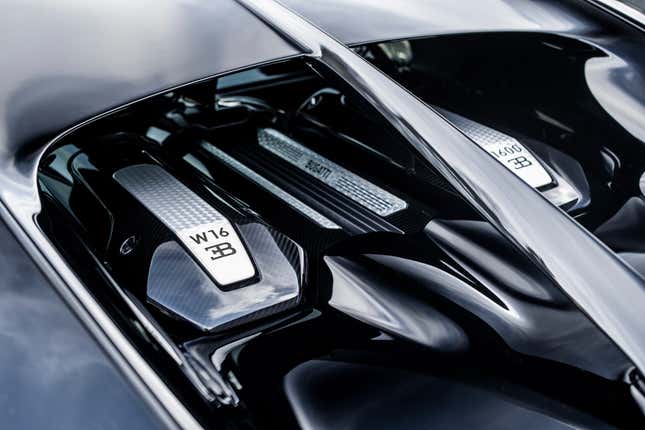
Photo: Bugatti
Black-on-black is far from what I’d want to do for my own Bugatti, but I think this Chiron is certainly classy, and it’s a really cool way to shed light on one of Bugatti’s more unknown historic models. “Having a customer so passionate in his desire to pay homage to this racing legend is a real privilege,” says Straub, “he and I spoke for hours, over many months, about the ways that we could create an authentic tribute, obsessing over every detail to ensure it was consistent with the Type 50S story.”
Bugatti’s managing director Hendrik Malinowski added that the Type 50S “may not have the reputation of the Atlantic, the Royale or the Type 35 but we managed to share our excitement for this car with the customer who recognized the importance of the Type 50S. It’s not just a modern-day design homage but a continuation of a story that began nearly a century ago.” As for the Chiron’s story, it’s nearly done. The final car in the 500-unit run has been completed, and the Chiron’s hybrid successor will be unveiled later this year.
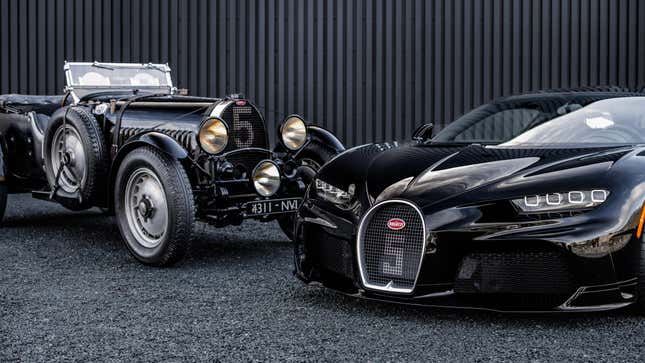
Photo: Bugatti
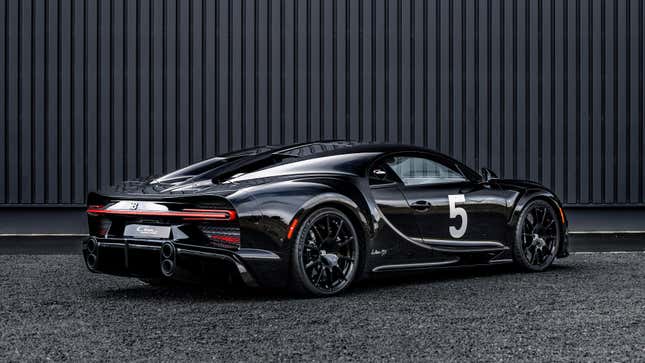
Photo: Bugatti
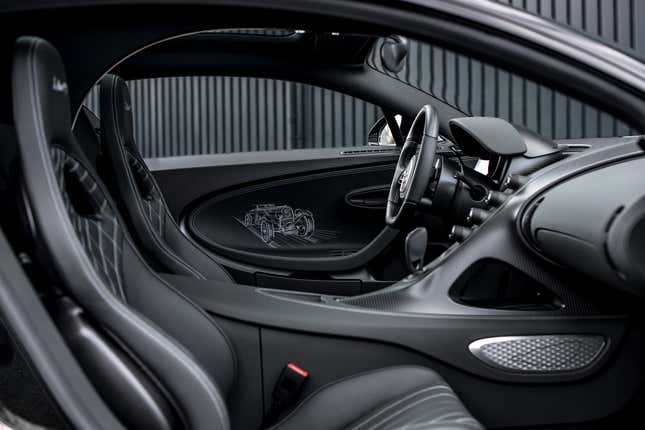
Photo: Bugatti
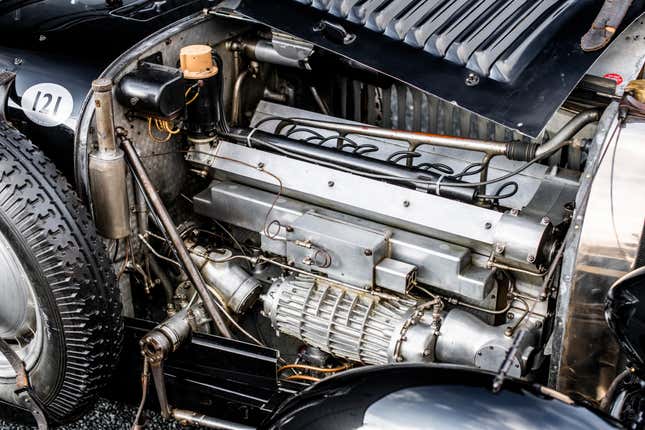
Photo: Bugatti
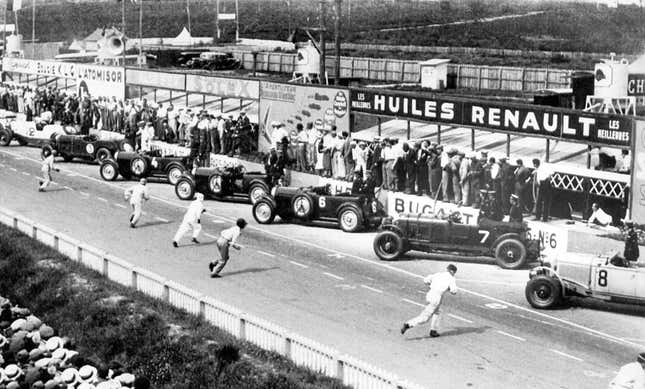
Photo: Bugatti
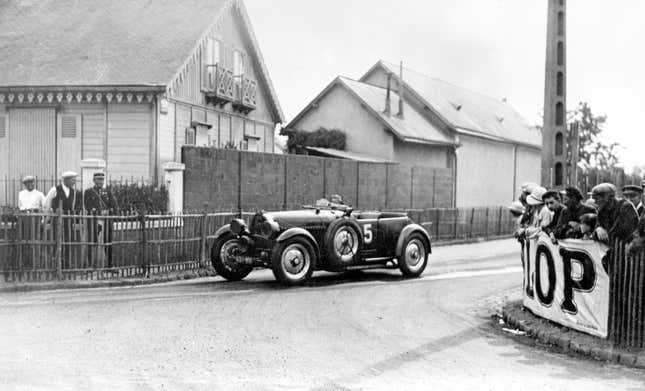
Photo: Bugatti



